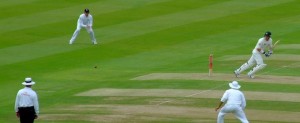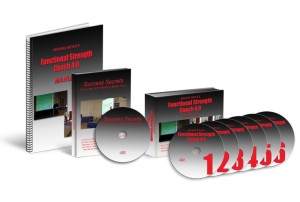In the past this site has featured some lighter, colloquial blog posts. These articles discuss issues related to the greater physiotherapy community. Thus, I present a few mantras I have heard, adapted or made up for the physios to live by in the coming year.
Have you ever heard of snapping scapula syndrome? If you answered no, I would not be too surprised. Whilst this condition is more common than you may think, it seems to be underappreciated within the physiotherapy. Thus, this article will discuss snapping scapula syndrome including what it is, why it occurs and what you need to do to fix it!
In this episode of the podcast I interview Paul Wright. Paul Wright is a physiotherapist and business consultant. He graduated from his first degree, as a Physical Education teacher, in 1987 and then graduated as a physiotherapist in 1990. He has also completed an Advanced Diploma in Business Management. Paul has opened multiple multi-disciplinary health clinic and has been actively involved in clinical education around the world having lectured to over 20,000 health professionals…
 TSP010: Health Business Success with Paul Wright (Part 1) [ 45:04 ] Play Now | Play in Popup | Download
TSP010: Health Business Success with Paul Wright (Part 1) [ 45:04 ] Play Now | Play in Popup | Download
You know what I’ve learned after talking to incredible sports physiotherapists and sports medicine professionals, attending numerous professional development courses, conferences and seminars and reading many books: there is so much that I don’t know. And I say that without reservation, as I know that it is impossible to stay at the forefront of current practice and research in all fields of sports medicine. There is just not enough hours in the day. Fortunately, I also know not to pass up opportunities to learn from experts in a given field. Thus, I would like to introduce you to Michael Boyle.
If you work with athletes who train hard, as many sports physiotherapists do, then you will have encountered exercise induced muscle damage or delayed onset muscle soreness (DOMS). It is also likely that the suffering athlete has come to you and said “I’m so sore from that workout – can you do anything?”. There are many widely used post workout and recovery strategies that are touted as effective at enhancing an athletes recovery from high intensity exercise. However, as is frequently the norm in sports medicine, the evidence for their use is mostly anecdotal rather than based on high quality clinical trials. Fortunately, a new review recently published discusses the effectiveness of physiotherapeutic interventions following high intensity exercise.
Can we get better results? The answer is yes. I am certain that following many physiotherapy or physical therapy treatments there is something else that could have been done or said that would allow the patient to get better results. Unfortunately, most physiotherapists do not have all day to spend with one patient, and are thus limited in what they can do. We just want to hope that we can efficiently deliver the best possible treatment or intervention in any given environment. This is why prioritising treatments and using Pareto’s Law can be quite important.
Patellofemoral pain syndrome is a condition that is commonly encountered by the sports physiotherapist. There is a clear reason for this, it has been reported to affect approximately 25% of athletes (DeHaven & Lintner, 1986). Furthermore, it is the most commonly reported injury sustained by runners (Taunton et al., 2002). Thus, it is the subject of much discussion on this site, and we have provided articles on a number of management options for patellofemoral pain syndrome. However, this article will discuss new research on potential prospective indicators for the development of patellofemoral pain syndrome.
One of the best things we can do for our patients is communicate with them well. Look at your day in the clinic: it’s talk, talk, talk! It is important that we talk well, as great communication is vital to becoming a great therapist. This is well covered ground on this site, as we have discussed the power of a great analogy and the role of communication in improving patient compliance. This article will discuss another valuable tool you have in your ‘Communicate Like A Champ’ toolbox… storytelling.
Let me ask you a question; do you work in a successful sports physiotherapy practice? If you said yes, firstly congratulations, I’m glad to hear that! My follow-up question is why is your practice so successful? What are the reasons or factors that make your sports physiotherapy practice a highly successful one?
Most of you guys would know that I am a massive fan of good old fashioned, pull your socks up, fine tuned communication with patients. I am certain that the better you communicate with your patients the better their outcomes will be. We have discussed the importance of great communication previously, its importance in improving your patient rapport, improving patient compliance or even improving your application of Mobilisation with Movement techniques. In this post I want to discuss a technique that many of us sports physiotherapists would use on a daily basis to improve our communication with patients; the mighty analogy.
In the past this site has featured some lighter, colloquial blog posts. These articles discuss issues related to the greater physiotherapy community. Thus, I present a few mantras I have heard, adapted or made up for the physios to live by in the coming year.
Radial tunnel syndrome is rare, it is challenging to differentially diagnose and can be a monster to manage. If you have a recalcitrant case of tennis elbow then this post will interest you! This article discusses the best available evidence for assessment and management of radial tunnel syndrome.








